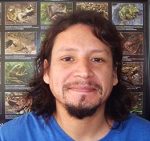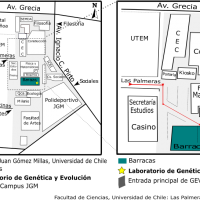PROJECTS
RESEARCH
Our research line is focused towards the integral study of the variation of characters in an interspecific and intraspecific level, simultaneously considering different ecological (at different analytic level) and historical (phylogeny) aspects. Using different species as models, we inquire the processes and mechanisms that would show differences between populations. To infer processes at a proximal scale we use traditional morphometric and geometric tools, of quantitative genetics (common garden experiments), fieldwork and different DNA sequencing technics. To infer historical processes, we use mitochondrial and nuclear genes applying methods such as phylogeographic, phylogenetic and comparative methods. As an emergent research line, we’ve put our interest in conservation genetics, emphasizing on the genetic and evolutionary components of the different linage and their relationship with landscape genetics.
HISTORY
Our research projects in the past 15 years have been directed mainly to studying the evolution of the Altiplano’s species (Andean Plateau) and the systems that maintain them (lakes, lagoons, bofedales and rivers). This research line corresponds to a collaborative effort between scholars of different faculties addressing a problem of national importance related to the information needed for making decisions about the management of hydric resource in the XV, I, II Región of Chile. Since there’s previous precarious and disperse knowledge about the biodiversity in these systems, we have made the attempt, using a multidisciplinary and collaborative approach, to contribute knowledge about this system, through: a) phylogenetic reconstructions on model species (fish of the genus Orestias, snails of the genus Biomphalaria and Heleobia, amphibians of the genus Rhinella and Telmatobius), b) characterization of each system in abiotic (salinity, pH, oxygen concentration, among others) and biotic terms (biodiversity, biogeographic relationships and history). For this we have used different approaches: limnology, ecology, population genetics, phylogenetic studies, genomics and transcriptomics.
NEWS

Congratulations Pablo Fibla
We would like to congratulate Pablo Fibla for his approval on his doctoral project. Hallelujah!!!!

Postgraduate Courses
The Chilean Society of Evolution is organising a course titled “Phylogenetic Approaches to Biodiversity II” dictated by Dra. Samantha Price from University of California, Davis. The course will take place at the Facultad de Ecología y Recursos Naturales, Universidad Andrés Bello, República 440, Santiago from the 2nd to 4th of November, 2016. To apply please send your CV and an intention letter before the 21st […]
LINKS

